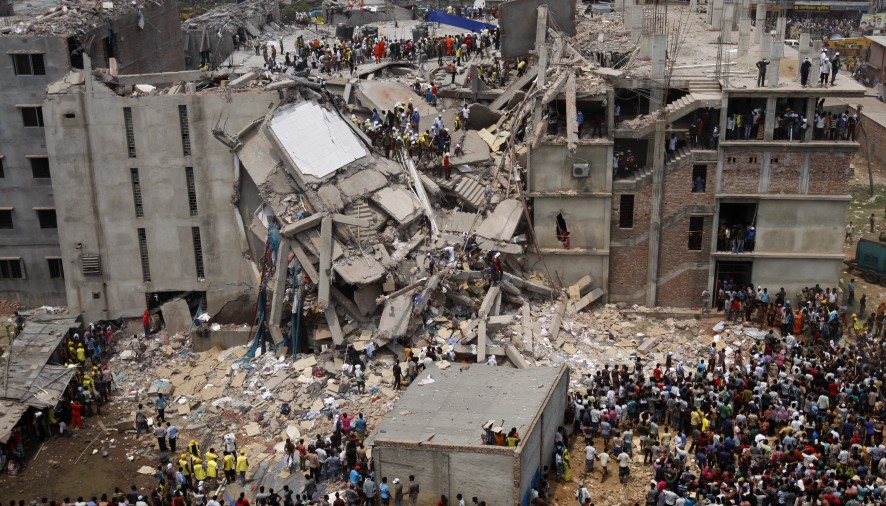When examining the Bangladeshi garment industry, it is almost unavoidable not to call into question the western consumer sweatshop boycott: is it actually helpful in bringing about change, or do we need a greater call for collective reform in this exploitative industry?
In the instance that large companies such as Next, Gap, and Primark are exposed for sourcing from sweatshops, their default reaction is to swiftly cut ties with the disgraced suppliers and promise to put in place frameworks that prevent such a ‘mistake’ from occurring again. However, such scandals return on a consistent basis, and with every press release it seems these clothing giants just continue to paint over the ever-widening cracks. Their responses do nothing to address the root cause of the sweatshop labour problem, with western demand for cheap garments a priority that continues to drive an exploitative labour race to the bottom.
In Bangladesh, 60% of all clothing exports go to the EU, with $4.5billion worth of exports going to the US. We are reliant on these foreign industries, yet show no concern for the livelihoods of those we exploit. Sweatshops are alive and well because corporations would never pay factory owners enough to be financially able to ensure suitable labour standards. Instead, employees work long, poorly paid hours in hazardous conditions to scrape some sort of revenue for the small-time middlemen of the international clothing business.
To maintain this exploitative relationship, the west consistently shifts any potential responsibility for the situation onto the exploited workforce itself. Take, for example, the US reaction to the 2013 Bangladesh factory collapse, where over one thousand workers perished. Acting as if it were an uninvolved mediator, the US government cut off trading benefits to the country, barking at the Bangladeshi government to clean up its act through stricter labour laws, as if it were an unruly adolescent. However, doesn’t the fact that US companies were sourcing from the aforementioned factory mean that the responsibilities for such a tragic disaster equally lie with investing western powers?
Corporations also manage to avoid industrial reform by instilling in the consumer a sense of self-righteousness when purchasing cheaply manufactured goods, with murmurings that ethically sourced clothes would be too expensive and incongruous to tight family budgets, when in reality businesses are too greedy to dent their profit margins and pay the extra costs that would make ethical clothing more accessible. Overall, a balance between affordability and a fair trading system can be developed, but it needs to come from the pockets of the corporation, not the consumer.
The implications of our economic system are often overtly described in monetary terms, when in essence, they are equally social. The obsession over cash flow has paved the way for a prioritisation of money over welfare, along with the prosperity of the individual over the collective good.
As consumers, we must stand up to this inequality and not passively partake in exploitation. Nevertheless, this task will not be easy, as sweatshop labour in the developing world is ridden with loopholes of exploitation. For example, in reaction to the 1993 exposure of mass child labour in Bangladesh, the Harkin’s Bill was passed in the US to prevent imported goods from Bangladesh being derived from child labour. Yet, rather than this improving livelihoods, twenty thousand children continued working in the same conditions, with others forced to work in alternative industries where working standards were even worse.
Overall, to raise awareness of the exploitation that lies behind the façade of cheap clothing in the western world, we cannot remain voiceless. Yes, without the boycott we would ignore the fact that each time we buy from these companies, the impenetrable fortress of corporate power would only be made stronger. However, to help these workers in their horrendous challenges of sweatshop labour, we must push for wide scale reform and subsidy for ethical clothing, in order to finally change the crippled industry.
Anna-Clare Chappell
[Image: Associated Press]

